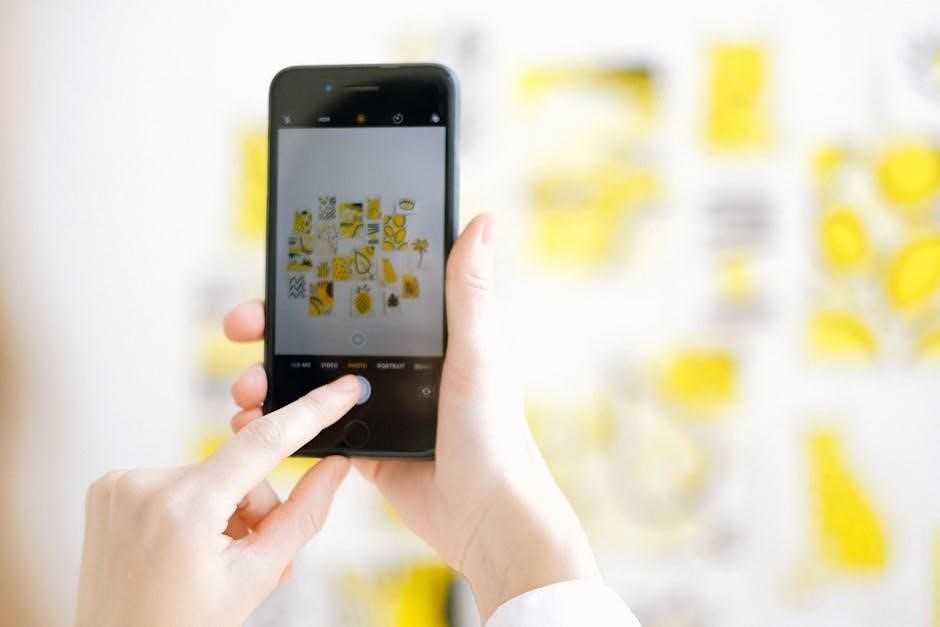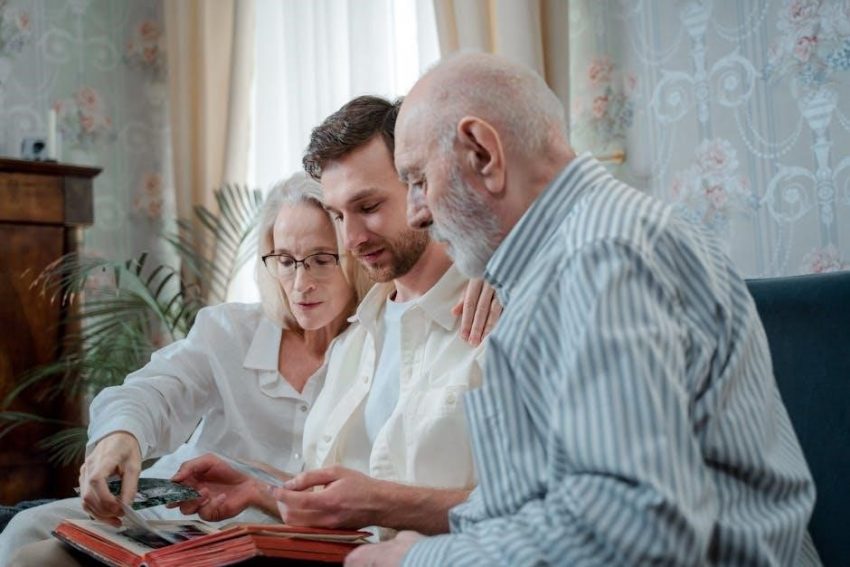Communication boards are visual tools enabling non-verbal individuals to express needs and emotions. They consist of symbols, images, or words, providing accessible, tactile communication solutions. Widely used in special education, these boards empower individuals with autism or speech disorders to communicate effectively. The Picture Exchange Communication System (PECS) is a popular method, offering free printable resources to support diverse communication needs. These boards are customizable, making them adaptable for various settings, including homes, schools, and therapy sessions.
1.1 What Are Communication Boards?
Communication boards are visual tools designed to facilitate communication for individuals who struggle with verbal expression. They typically consist of a grid or layout of symbols, images, or words that users can point to or exchange to convey messages. These boards are often customizable, allowing them to be tailored to an individual’s specific needs and preferences. They are widely used in special education and therapy settings to support non-verbal or low-verbal individuals, including those with autism or other communication disabilities. By providing a tangible and accessible means of expression, communication boards empower users to interact more effectively with their environment and others. They are particularly popular in conjunction with the Picture Exchange Communication System (PECS), which emphasizes the use of visual aids to initiate and maintain communication. Free printable resources, such as PECS pictures in PDF format, make these tools more accessible and affordable for families and educators.
1.2 Importance of Communication Boards for Special Needs
Communication boards are vital tools for individuals with special needs, enabling them to express thoughts, needs, and emotions through symbols, pictures, or words. The Picture Exchange Communication System (PECS) is particularly effective, teaching functional communication by exchanging pictures. These boards are essential for those with autism or communication disorders, providing accessible means of expression. Free printable PECS pictures and customizable options allow educators, therapists, and caregivers to tailor communication tools to individual needs, enhancing effectiveness. By supporting non-verbal individuals, communication boards foster independence, reduce frustration, and promote social interaction, significantly improving their quality of life.

Understanding PECS (Picture Exchange Communication System)
PECS is a method teaching functional communication through picture exchange, designed for individuals with autism and special needs. It uses symbols to initiate interactions, offering free printable resources for accessibility and effectiveness.
2.1 What is PECS?
PECS (Picture Exchange Communication System) is a method designed to teach functional communication to individuals with autism and other special needs. It uses visual symbols or images to initiate communication, allowing users to exchange pictures to convey messages. This system is particularly effective for non-verbal individuals, providing a structured approach to learning essential communication skills through visual aids. PECS is widely recognized for its simplicity and effectiveness in fostering independence in communication.
2.2 How PECS Works
PECS operates through a structured, evidence-based approach where individuals exchange pictures or symbols to communicate. It begins with teaching the exchange of pictures for desired items, gradually progressing to building sentences and complex communication. Users learn to initiate interactions, express needs, and engage in conversations using visual aids. The system emphasizes consistency, reinforcement, and the use of supportive strategies to ensure effective communication outcomes.
2.3 Benefits of Using PECS
PECS offers numerous benefits, primarily enhancing communication skills for non-verbal individuals. It fosters independence, reduces frustration, and promotes social interactions. The system is adaptable to various needs and learning styles, making it widely accessible. PECS also encourages consistent communication strategies across different environments, ensuring continuity and progress in developing functional communication abilities for users with autism and other special needs.

Free Printable PECS Pictures and Communication Boards
Free printable PECS pictures and communication boards are widely available online, offering customizable solutions for diverse communication needs. They provide cost-effective, accessible tools for individuals with special needs.
3.1 Sources for Free Printable PECS Cards
Multiple websites offer free printable PECS cards, such as The Watson Institute and MyPECS.com. These platforms provide downloadable PDFs, including customizable cards for various needs. Resources range from basic communication symbols to detailed activity schedules. Many sites cater to educators, therapists, and caregivers, ensuring accessible tools for teaching functional communication skills to individuals with autism or special needs.
3.2 How to Download and Use Free PECS PDFs
To use free PECS PDFs, visit reliable websites like MyPECS.com or The Watson Institute. Download the desired PDF, print the cards on sturdy paper or cardstock, and laminate for durability. Cut out individual cards and organize them on a communication board or binder. Customize the cards to meet specific needs and update them as communication skills progress. Regularly review and adapt the cards to ensure effectiveness.

Customizing Your Communication Board
Customizing involves tailoring boards with personalized symbols, colors, and images to meet individual needs, ensuring effective communication and engagement for users with unique preferences and requirements.
4.1 Tailoring PECS to Individual Needs
Tailoring PECS involves assessing the user’s specific needs, preferences, and abilities to create a personalized communication system; This includes selecting relevant symbols, organizing layouts, and incorporating personal interests to enhance engagement. Customization ensures the board is user-friendly and aligned with daily routines, fostering effective communication. Regular updates and adjustments are essential as the individual’s needs evolve over time, ensuring long-term effectiveness and relevance.
4.2 Adding Personalized Symbols and Images
Adding personalized symbols and images to PECS boards enhances communication by incorporating familiar objects and activities specific to the user. This customization helps in better engagement and understanding. Symbols can be downloaded from free resources or created using personal photos, ensuring relevance and context. High-quality, clear images are essential for readability, making communication more intuitive and effective for individuals with diverse needs and preferences.

Step-by-Step Guide to Creating a Communication Board
Creating a communication board involves assessing needs, selecting symbols, designing layouts, and printing materials. Use free PDFs and customizable templates to tailor boards for individual preferences and requirements.
5.1 Choosing the Right Symbols
Selecting symbols for communication boards involves ensuring they are relevant, clear, and easily recognizable. Use high-quality images or icons that match the individual’s needs and preferences. Categorize symbols by activities, emotions, or objects for easy access. Ensure consistency in design and size for uniformity. Customize symbols to reflect personal experiences, making communication more effective and engaging for the user.
5.2 Printing and Laminating PECS Cards
Print PECS cards on high-quality paper or cardstock for durability. Use a printer with clear resolution to ensure symbols are visible. Laminate the cards to protect them from wear and tear. Cutting them neatly ensures easy handling. Store them in organized folders or rings for quick access. This step ensures the cards remain sturdy and long-lasting, supporting consistent communication efforts.
5.3 Organizing the Communication Board
Organize PECS cards into categories like food, emotions, or activities for easy access. Use folders or rings to keep cards tidy and visible. Arrange symbols in a logical order, such as alphabetical or frequency of use. Consider laminating cards for durability and ease of cleaning. Personalize the layout to meet individual needs, ensuring frequently used symbols are readily accessible. This structure promotes effective and efficient communication.

Popular Resources for Free Printable Communication Boards
Top resources include The Watson Institute, My PECS, and Amy Speech Language Therapy, offering extensive libraries of free printable PECS cards and customizable communication boards for diverse needs.
6.1 Websites Offering Free PECS Downloads
Top websites offering free PECS downloads include The Watson Institute, My PECS, and Amy Speech Language Therapy. These platforms provide extensive libraries of printable PECS cards, communication boards, and customizable templates. Users can access a wide range of visual aids, including symbols for everyday activities, emotions, and basic needs. These resources are ideal for educators, therapists, and caregivers supporting individuals with autism or speech challenges.
6.2 Recommended Tools for Creating Custom Boards
For creating custom communication boards, tools like My PECS and Widgit are highly recommended. These platforms offer free image libraries and customizable templates, allowing users to tailor boards to individual needs. Boardmaker is another popular tool, providing extensive symbol libraries and editing features. These resources enable educators and caregivers to design personalized communication solutions efficiently, ensuring accessibility and effectiveness for users with diverse requirements.

Tips for Effective Use of Communication Boards
Start with simple boards, gradually adding complexity. Encourage active participation and consistent use. Use clear, high-quality images from free PDFs, ensuring ease of understanding and accessibility for all users.
7.1 Starting with Simple Communication Boards
Begin with basic boards featuring essential images like food, actions, and emotions. Use free printable PDFs to create straightforward designs, ensuring ease of understanding. Start with a few core symbols to avoid overwhelming the user. Gradually introduce more complex visuals as communication skills improve. This approach fosters confidence and independence, making the learning process more effective and engaging for individuals with special needs.
7.2 Encouraging User Participation
Encourage active involvement by tailoring boards to individual needs and interests. Use high-quality, recognizable images to ensure clarity. Implement positive reinforcement when users interact with the board. Involve users in creating their own symbols, fostering a sense of ownership. Offer choices to empower decision-making. Celebrate successes, no matter how small, to build confidence. Incorporate familiar routines to make communication feel natural and meaningful, promoting consistent and enthusiastic participation.
7.3 Consistency in Using PECS
Consistency is key to effective PECS use. Ensure all caregivers and educators use the same symbols and routines. Maintain a structured environment where boards are always accessible. Regularly review and update communication cards to reflect changing needs. Use consistent reinforcement strategies to encourage interaction. Familiarity with the system helps users feel secure and confident, promoting steady progress in communication skills over time.

Success Stories and Case Studies
Inspiring stories highlight how PECS transformed lives of non-verbal individuals with autism, fostering independence and confidence; Consistent use of PECS boards led to remarkable communication growth.
8.1 Real-Life Examples of PECS Success
Many individuals with autism have achieved remarkable progress using PECS. For instance, a non-verbal child began using PECS cards to express basic needs, gradually expanding to complex sentences. Another case involved a teenager who learned to initiate conversations, fostering social connections. These examples demonstrate how accessible, free printable PECS pictures can empower individuals, promoting independence and confidence in communication.
8.2 How Communication Boards Have Made a Difference
Communication boards have revolutionized interaction for non-verbal individuals, enabling them to express needs, desires, and emotions. Free printable PECS pictures provide accessible tools, reducing frustration and fostering independence. These boards have transformed daily routines, from simple requests to complex conversations. They empower individuals with autism and special needs, helping them navigate social and educational environments with confidence, while strengthening relationships with caregivers and peers.

Overcoming Challenges with Communication Boards
Challenges like understanding proper board design and user resistance can be addressed through training and customization. Free printable PECS pictures and troubleshooting guides help ensure effective implementation and use.
9.1 Common Issues and Solutions
Common issues with communication boards include difficulty organizing symbols and user resistance. Solutions involve using free printable PECS pictures to customize boards, ensuring relevance to the user’s life. Regular training and troubleshooting guides also help address these challenges effectively, promoting successful communication outcomes for individuals with special needs.
9.2 Troubleshooting Tips for PECS Users
Ensure symbols are relevant and easy to understand, using free printable PECS pictures. Regularly review and update communication boards to reflect changing needs. Encourage consistent use across environments and provide visual supports like schedules. Address resistance by involving users in customization. Use high-quality images for clarity and ensure proper organization of PECS cards. Access troubleshooting guides and free resources online for additional support.
Communication boards and free printable PECS pictures are invaluable tools for empowering individuals with special needs. They provide accessible, customizable solutions for fostering independence and effective communication.
10.1 Summary of Key Points
Communication boards, especially those using free printable PECS pictures, are essential tools for fostering communication in individuals with special needs. They provide visual aids that empower non-verbal individuals to express their needs and emotions effectively. The availability of free, customizable resources has made these systems accessible to caregivers and educators worldwide, ensuring tailored support for diverse communication requirements and enhancing overall quality of life.
10.2 Final Thoughts on the Importance of Communication Boards
Communication boards, particularly those with free printable PECS pictures, are invaluable for empowering individuals with special needs. They provide a tangible means of expression, fostering independence and confidence. By offering customizable, accessible tools, these boards bridge communication gaps, enabling meaningful interactions and enhancing quality of life for users and their support systems alike.

